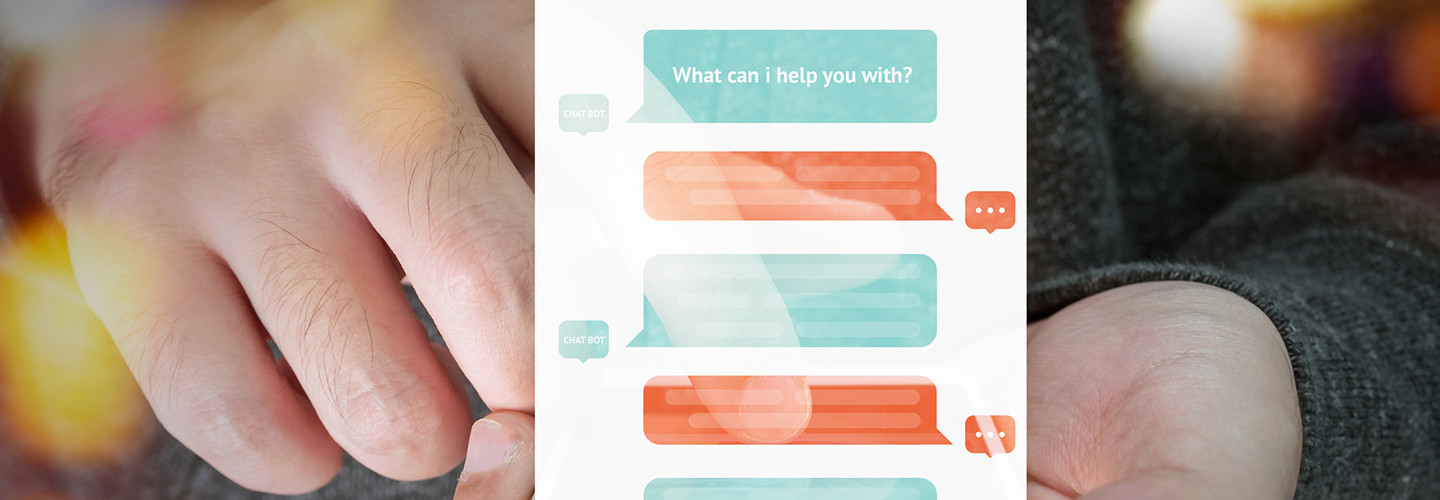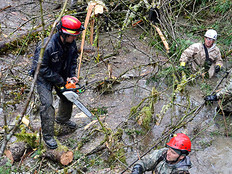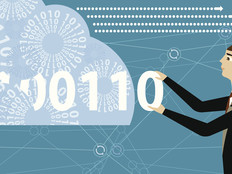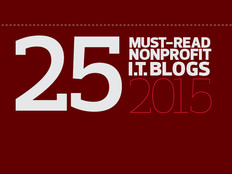Will Nonprofits Turn to Chatbots to Help Fulfill Their Missions?
In the future, your most common interaction with a nonprofit organization may not be with the clipboard-carrying canvasser on the street. It might be with a robot.
Chatbots, artificially intelligent pieces of conversational software, are becoming more commonly used by organizations of all sorts, and nonprofits are using them in a variety of ways. Nonprofits can use chatbots to deliver aid more quickly, help spread the word about a cause, and give supporters information to connect them more deeply to the organization's mission.
While it's still too soon to say that chatbots have become a dominant piece of technology in nonprofits' IT portfolios, it's undeniable that nonprofits are making productive use of the AI technology. Chatbots are becoming more popular in general.
As of April, Facebook Messenger developers had created 100,000 chatbots for Messenger in the first year of the Messenger Platform, VentureBeat reports, up from 30,000 in September 2016. The number is likely much higher now. And Gartner predicts that by 2020, the average person will have more conversations with bots than with their spouse.
"Today, the average chatbot's language skills have advanced enough that they can do all kinds of things beyond answers to basic questions," Beth Kanter, co-author of The Networked Nonprofit books, writes on her blog. "Artificial intelligence has become the new customer service department. But many nonprofits probably do not need a bot to become their stakeholders' best virtual friends or advisers." Creating or improving a highly functional chatbot that can build your organization's mailing list or answer basic questions can be more beneficial, she writes.
SIGN UP: Get more news from the BizTech newsletter in your inbox every two weeks!
How Nonprofits Can Use Chatbots
There are as many nonprofit uses for chatbots as there are nonprofit organizations. Some are more sophisticated than others and each serves a unique purpose.
Nonprofits should consider what they want to use a chatbot for and the implications of using the technology.
"Not surprisingly, enthusiastic techtopians are pronouncing all the wonderful ways that robots are going to help us," Kanter and Allison Fine, who co-authored one of The Networked Nonprofit books, write on the GuideStar Blog (one of BizTech's 25 Must-Read Nonprofit IT Blogs of 2017).
"However, a fuller examination of the darker side of the bots is also required because they are going to change our relationship with society and with one another," Kanter and Fine write. "And anything that affects our humanity and our relationships has profound implications for the nonprofit sector."
Here are some examples of how nonprofits are using chatbots today:
- The United Nations' World Food Programme, which helps fight hunger worldwide and reaches 80 million people per year, has used chatbots to assess which areas are most in need of food aid. In 2017, as Quartz reports, WFP rolled out its "Food Bot," which works on Facebook Messenger, Telegram and other apps. Chatbots, Quartz says, "offered a wider reach that could collect more nuanced data" than a traditional SMS text message outreach campaign could. Kanter and Fine note that WFP has used the bot "to interact with the people they serve by providing information on WFP services, food prices, weather updates, nutrition and disease prevention."
- Nonprofits can also use chatbots to give supporters more information about their work. For example, the San Francisco Museum of Modern Art has 34,678 items in its collection, Kanter and Fine note. "A patron would have to walk 121 miles to see them all!" they write. The museum created the "Send Me" bot to better share its collection by allowing users to text a message to the bot and receive a picture of a piece of art matching the idea, words or phrase texted. "The bot unlocks all of the artwork of the museum for virtual viewing by anyone, anywhere, at any time," Kanter and Fine write.
- Charity: water, which aims to bring clean and safe drinking water to people in developing countries, helped create a chatbot called Yeshi that gives users an interactive experience of a fictional Ethiopian girl named Yeshi (the name means "the one for a thousand," according to an article on Campaign US) on her hours-long trek to find clean water. The bot is designed to give supporters a deeper understanding of the water crisis and how difficult it is to obtain clean drinking water in many parts of the world. That will hopefully make supporters more connected to those the nonprofit aims to help. "As humans, it's easy to tune out crises as a problem in some far-off place," Steven Izen, CEO of Lokai, which helped create the bot, tells Campaign US. "As we all know, when we are affected personally or know someone who is affected, then the crisis or problem becomes real for us."
"We know from experience that nonprofits will too often lean back away from rather than into new technologies," Kanter and Fine write on the GuideStar blog. "We cannot afford to be passive observers of bots because we are going to need to learn how to control them — or they are going to control us (or kill us!). In the age of automation, the responsibility for lifting up the fallen, appealing to and activating our better angels, and preserving our humanity falls to the nonprofit sector. It's time to get to work."








